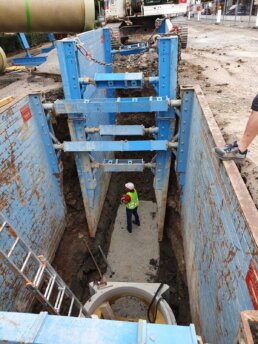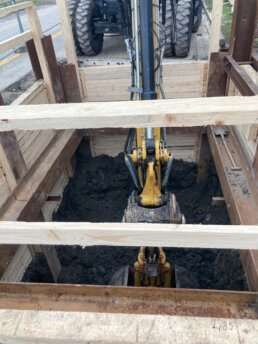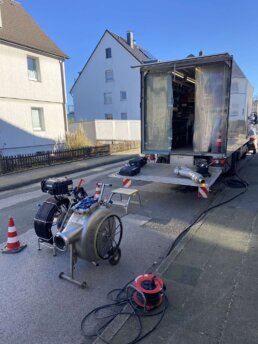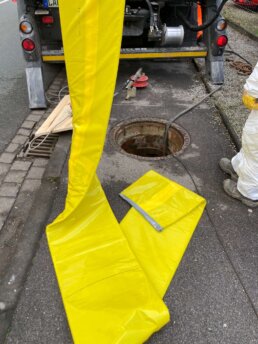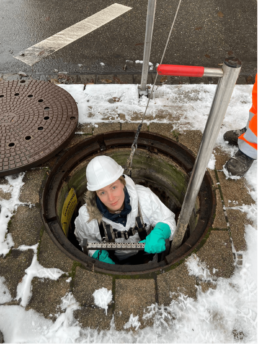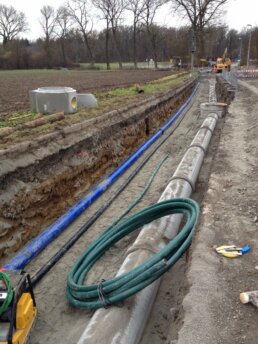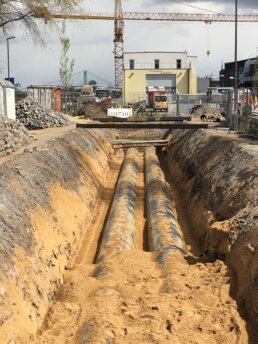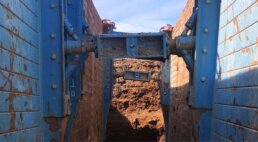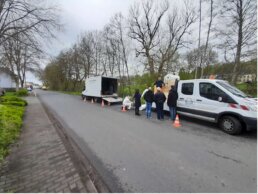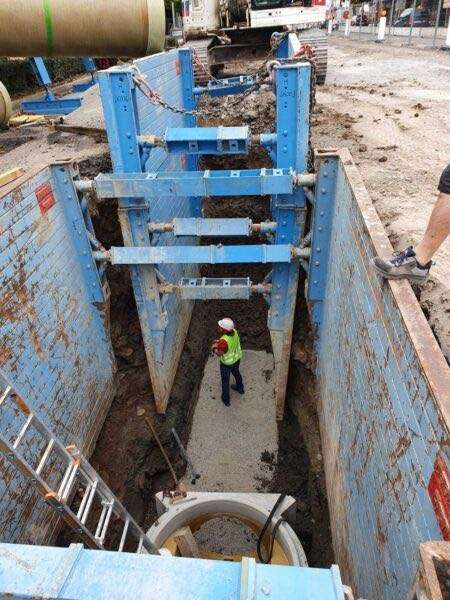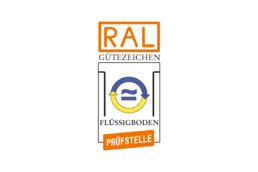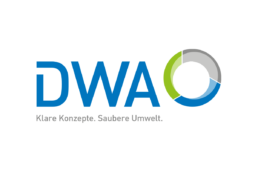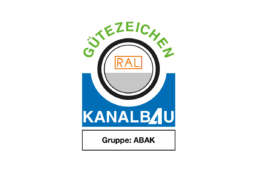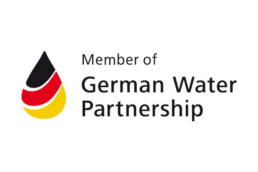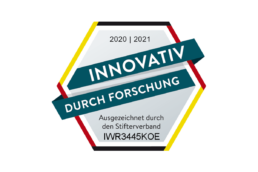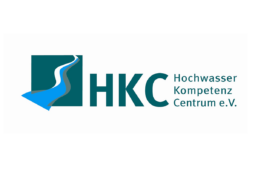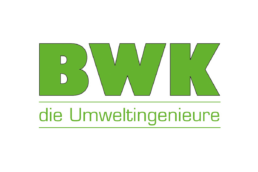Professional sewer renovation - throughout Germany
From condition assessment to construction supervision - we accompany you through everyrefurbishment project with technical expertise and practical implementation.
Nationwide sewer rehabilitation for a sustainable drainage infrastructure
Whether in the city, in the countryside or in an industrial area – intact sewer systems are the backbone of a functioning urban drainage system. IWR GmbH offers comprehensive engineering services for all aspects of sewer rehabilitation – nationwide, sustainable and reliable.
Why is sewer rehabilitation so important?
A functioning sewer system is the basis of every modern urban drainage system. It ensures that wastewater and rainwater are drained away in a controlled, safe and environmentally friendly manner. However, many of the existing sewers in Germany date back to the 1960s to 1980s – in some cases even earlier. They were built using the materials and construction methods commonly used at the time, which often no longer meet today’s requirements in terms of stability, operational safety and leak-tightness.
Over the decades, wastewater networks have been exposed to considerable stress. Chemical influences, temperature fluctuations, traffic loads and structural changes in the catchment areas all affect the pipes. The result: cracks, leaking joints, pipe bursts, material fatigue and root ingrowth. Particularly in combined water systems or with inadequate rainwater management, hydraulic overloading can occur, which in turn can cause damage to the sewer network.
Such deficits often go unnoticed for a long time. They develop gradually and only become visible when acute problems occur – for example, due to backwater, odor problems, road subsidence or, in the worst case, environmental damage as a result of wastewater leaking into the soil and groundwater. The remediation costs then rise drastically and the operational costs also increase considerably.
Timely, targeted sewer rehabilitation is therefore urgently required from both an ecological and economic point of view. It prevents consequential damage, reduces operating costs and significantly extends the service life of the existing infrastructure. In addition, operators thus meet legal requirements in accordance with DIN EN 752 for stability, operational safety and leak-tightness as well as water protection – for example in accordance with Section 60 of the German Federal Water Act (WHG) or the technical rules of the DWA.
Sewer rehabilitation is also becoming increasingly important in the context of climate change: more frequent heavy rainfall events, higher groundwater levels and changing drainage patterns place additional demands on the performance and stability of the networks. A modernized, intact sewer system is the prerequisite for cities, municipalities and companies to remain fit for the future.
IWR GmbH supports you with holistic, tried-and-tested solutions – from condition assessment to renovation planning and implementation. Safeguard the value of your infrastructure before damage occurs.
Sewer rehabilitation processes and methods
The renovation of drainage systems can basically be divided into three categories: Repair,renovationandrenewal. Depending on the type of damage, service life and economic conditions, different methods are used – with different service lives.
1st repair (service life approx. 15 years)
During the repair
selective damage
locally without having to rehabilitate the entire pipe. Typical applications are cracks, leaking sockets or root ingrowth.
Common methods are:
-
Short liner:
Resin-impregnated GRP mats
are used with Packers spot on at damaged areas in the channel positioned and installed. By striking of the Packers with Lairprint the short liner is pressed against the pipe wall and hardens dplace through the Ambient temperature off. After curing the air isfrom the packer and the packer is removed. -
Robotic process:Damage is repaired repaired by a mobile robot with different tools. Possible repairs are, for example, the grouting of cracks and damaged connections and the filling of damaged areas. Different types of robots and materials can beials can be used. The most common materials are epoxy resins, Silicate Hresin and PUR resin. It is also the use of cement mortar is also possible.
-
Stainless steel cuffs: Thanks to a tensionable stainless steel sleeve with an external EPDM seal can be used to repair localized damage such as leaking connections or cracks in the sewer. D he cuffs are applied either manually or by means of a robot in the channel placed. The tensioning the EPDM seal is pressed onto the damaged area, thus restoring the structural integrity of the sewer.n integrity of the duct section.
2. renovation (service life at least 50 years)
The renovation is a comprehensive overhaul or renovation of the entire or restoration aa sewer system or as canal section including theeat originalr substance. In contrast to the repairAtur, renovation is not only possible at certain points, but for the entire pipe or section. The result is a pipe in a pipe system whose stability, operational safety and tightness are guaranteed again.
Proven methods of renovation are among others:
-
Tube lining
(inliner):A resin-soaked hose is pulled into the holderset up and cured – fast, economical, trenchless. The carrier material used is GRP or Nadel felt. Curing can be by hot water, water vapor, UV light or the ambient temperature.the ambient temperature take place. As with the repair, the connections are joined using robotic processes or manually in the case of accessible sewers, whereby the ends of the liner in the manholes are sealed using GRP hand laminateepoxy resin or liner end sleeves can be connected. Due to the thin wall thicknesses of the liners, the hydraulic capacity of the sewer is almost completely retained. -
Pipe relining
:A new pipe is in one piece over a manhole or an excavation pit into the old pipe into the old pipe. The pipe must be made of a flexible material such as e.g.. polyethylene or polypropylene, so that the installation at all is possible. This process makes the diameter of the new pipe section smaller than that of the Old pipe sein, which must be taken into account in the hydraulic situation. Connections are not easily possible with this method. If connections are necessary, they must be glued or welded, depending on the pipe material. This usually requires a Head hole necessary. The annular space between the old pipe and the new pipe is insulated after installation insulated. -
Close-fit process: Similar to pipe relining the close-fit process, a pipe is inserted by the meter into the existing old pipe moved in. In contrast to the Pipe relining isHowever, the pipe is deformed into a U- or C-shape before it is drawn in. Accordingly, here too flexible materials such as e.g. polyethylene or polyvinyl chloride for Use. Due to the deformation of the pipe, e simple insertion via the manhole structures. After insertion, the new pipe is heated with hot air. and the memory effect of the tube back to its original rand round shape backguided. This means that the annular space can be reduced to a minimum and a Insulation is not necessary. The reduction of the hydraulic cross-section is therefore limited. Similar to the Pipe railing the tying of connections is is not easily possible with this method and is carried out by gluing or welding, depending on the pipe material.
3. renewal (service life 100+ years)
If the existing pipe is irreparably damaged or hydraulically inadequate, it will be
completely replaced
. This is usually done using open construction methods:
Excavation and new construction:
Old pipe is removed, new pipe bed is prepared, new sewer is laid, the excavation pit is backfilled and the superstructure is restored.
In exceptional cases
Dynamic methods such as
burst lining
in which the old pipe is burst open and a new one inserted at the same time.
The choice of a suitable process is based on technical feasibility, costs, environmental aspects and operational requirements – IWR GmbH provides sound and independent support during this process.
Our services
IWR GmbH supports you in sewer rehabilitation from the initial survey through to acceptance. Our services include
- Condition survey: camera inspection and leak test (monitoring and evaluation of measures)
- Creation of renovation concepts and comparison of variants
- Selection of economical rehabilitation methods (inliner, short liner, open construction method, etc.)
- Tender management and award support
- Construction supervision, quality assurance and documentation
Our work is manufacturer-neutral, solution-oriented and always focused on the most cost-effective solution.
Our customers
Our customers in the field of sewer rehabilitation include companies throughout Germany:
- Municipalities and special-purpose associations
- Housing associations and property developers
- Industrial and commercial enterprises
- Engineering offices and planning cooperations
Whether an individual measure or a complex network project – we adapt our services flexibly to your project.
Why IWR GmbH?
Professional sewer rehabilitation is more than just repairing damage: We see infrastructure as a living system that needs to be adapted, developed and operated sustainably. With our interdisciplinary approach, we combine technical precision with practical operational experience.
- Over 15 years of experience in urban water management
- Technically sound and economically viable solutions
- Sustainable thinking and environmentally oriented planning
- Germany-wide project portfolio and strong partner networks
- Certified sewer rehabilitation consultants in the team
- M.Eng. Maintenance management of piping systems in a team
Our experts for sewer renovation
Marvin Elsbecker

Head of Department
Urban water management planning
Sewer rehabilitation & Technical equipment
Konstantin Hartmann

Project Manager
Construction Supervising
Frederik Maurer

Managing Director
Contact
Contact us! We’ll be happy to help with your questions and queries.
Further information:
-IWR project“Sewer rehabilitation Gevelsberg”
-IWR project “Sewer rehabilitation Pulheim”
-IWR project“Sewer rehabilitation Körperich“


